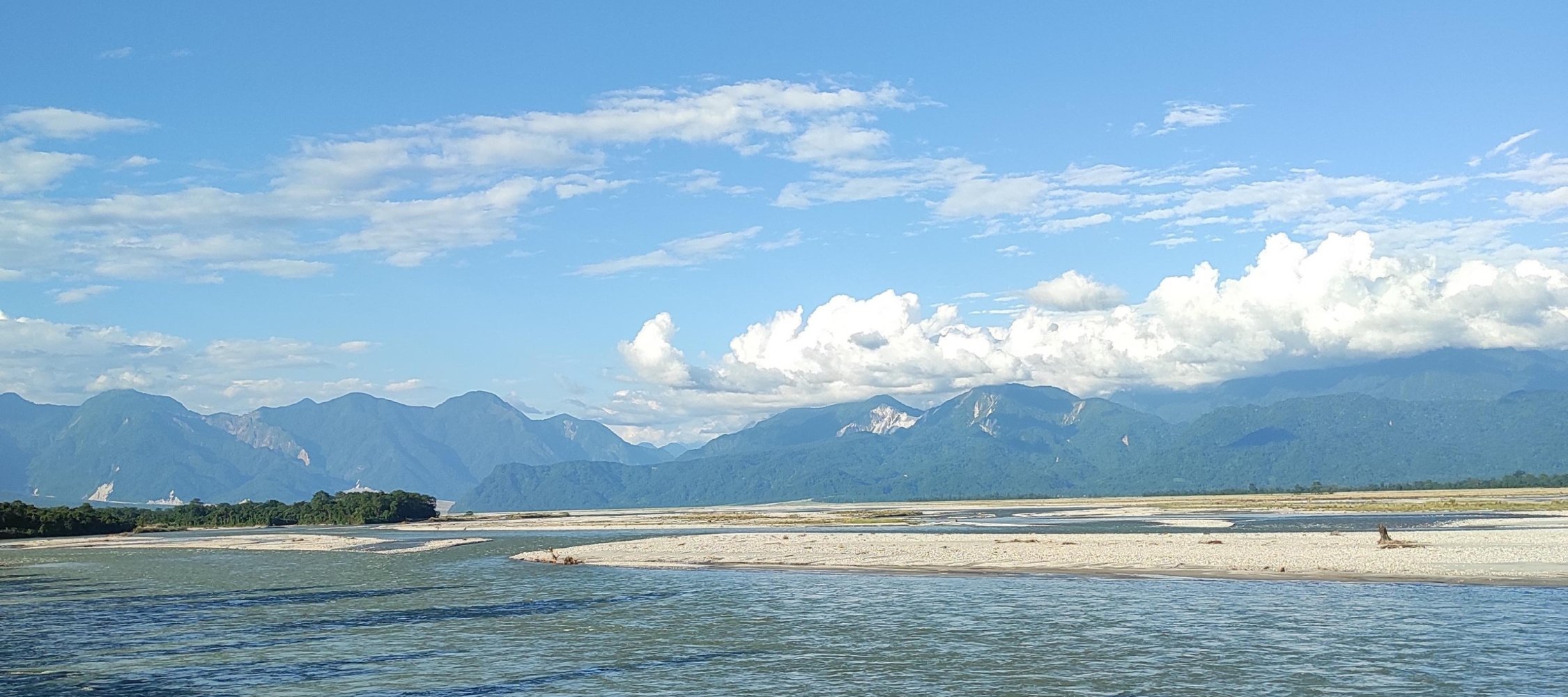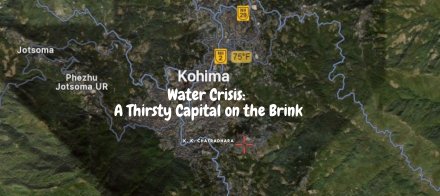 |
The mighty Dibang, the Talo or the Sikang – call what you may! Just as a plurality in name, the river has harboured within its fold people from all walks of life. The locals in the vicinity of this ever-flowing wonder recall with sigh and awe their fair share of experiences with the river. The Bomjir village inhabitants like to call the river Sikang, which is an inseparable part of their village’s history.
Bomjir lies at the periphery of the great Dibang, just about 200 metres from the river bank. The village comprises locals, most of whom speak in Padam and Milang dialects, both being the sub-tribes of the Adi indigenous community. The Adis, conspicuously, is considered one of the most populous groups among the indigenous tribes of Arunachal Pradesh. There are over 61 families of local origin residing in Bomjir. Almost the entire village is dependent on shifting cultivation and fishing for their income and livelihood.
Bomjir is one of the oldest villages in the Lower Dibang Valley district, which has evolved with the changing mood of the river Dibang. Villagers with their hazy memories narrated their forefathers’ stories, according to whom most locals had migrated to the village from the upper areas of Damro. Recollecting his grandfather’s stories, Kakong Tayeng, a 49-year-old man said, “When the people first migrated to Bomjir, the entire land was covered with thick forest; the width of the river was small but deep.” But over the years, as the population grew, the pressure on land and forest increased too, triggering indiscriminate felling of trees and degradation of land. However, elders said deforestation was one of the factors for subsequent changes in the behavior of the river Sikang (Dibang).
While travelling through the smoother concretes of the road from the recently completed reinforced cement concrete (RCC) bridge, there comes a turning, which leads to a small village, large in areas but less in population. Before the bridge was constructed, villagers from Bomjir had to take a dingy boat to cross the river to ferry their goods or travel anywhere outside the village. Crossing the flowing river in a dingy boat was always a risky journey, and one had to endure a lot of stress and anxiety in case of any emergency.
Although Sikang is a perennial river, it keeps changing its course after every few years. Its claim to the areas around it is visible as the river bank gets eroded each time it decides to turn. The fear of their lands being submerged into the water is instilled into the minds of the villagers. The last time when the Dibang chose to change its course, almost 200 metres of Bomjir was worn away by the river. The village had to be shifted twice because it submerged the first two areas where the village existed originally. Thus, the lands closer to the river tend to face some losses of their livelihood when the water’s occasional aggression is unleashed upon them.
People flock around the land near the river for their accessibility and means to sustain and nourish their lives. They adapt to the environment around them and interpret their surroundings according to their understanding. Similarly, this large natural flow of water is referred to as Dibang by some, Talo by others, and Sikang by some others. The villagers address the rivers as ‘Sikang.’ Although the exact meaning of the word is unknown, many believe it has derived from the name of a traditional vessel, which was used for storing water. Sikang has braided features with at least three major channels. The river that flows nearest to the village is known as Siru, which means ‘steep water.’ The one in the middle is called Podong; the channel that flows the furthest away from the village call Tapi, the literal meaning of a river plant.
Water, water all around, but nowhere to drink!
Long ago, elders said villagers used to drink the river water, but now due to iron contamination, no one uses the water for drinking. The villagers solely depend on the one last surviving natural spring near a forest patch that they have protected. Some households tried to draw water from the spring by connecting it through a network of bamboo channels.
Of course, pipelines have been laid from Dambuk to Bomjir. Still, villagers said the water supply was irregular, and water pipelines in a particular section were damaged but not repaired for long. Bomjir falls under the Dambuk circle of the lower Dibang valley district, which is the only link to a government support system. The villagers are trying to avail the ongoing water scheme under the “Jal Jeevan Mission” to secure pipe water supply to Bomjir. A technical assessment suggested that the water pipeline supply to Bomjir was quite feasible.
Of course, once the bridge was built, a section of people, essentially the boatmen and those workers from Assam engaged in the ferry services, lost their livelihood; the local boat owners were forced to look for other businesses. Fishing has been one of the primary sources of livelihood for the communities of riverside villages. While strolling along the banks of the river, we could still see some youth with their fishing rods enjoying the bliss of the winter while they patiently waited for those aquatic creatures to be fooled by their bait. Locals follow various fishing practices of which the traditional style of catching fish in bamboos and the use of the fishing net is common. Few indulge in certain damaging practices, such as, using dynamite or plant-poisoning to temporarily stun the fishes, which, of course, have been declared illegal by the village authority. The violators are slapped with a hefty fine of up to Rs.10,000. The traditional village governance institution, headed by gaon bura, still holds sway over the village affairs. Though the gaon bura is elected by community consensus, the village headman’s tenure is life-long until he decides to retire of his own volition.
However, despite all these emerging possibilities, for most of the villagers in Bomjir, traditional farming known as Jhum or shifting cultivation, continues to be their lifeline. This cultivation is done twice a year, during the summer and winter. Before embarking on the cultivation, the villagers gather in the community hall to decide the site for new cultivation. Thus, the place to be slashed and burned for cultivation is finalised by each individual family. All the families of the village rely on shifting cultivation for livelihood. Paanikheti or wet rice cultivation was a common and profitable form of agricultural practice for the villagers of Bomjir until it was entirely washed away by the river. As Kakong Tayeng recalls, his 10 hectares of wet rice fields were completely washed away by flood water in the previous year. Thus, there is always this inevitable fear of flood among the villagers due to torrential rainfall every year.
The sun shifts its position to return to rest, and the villagers head home after a strenuous day in the field. A mother and her child are busy plucking some wayside berries for their evening dinner. There is the sweat of the entire day’s hard work on the foreheads of the farmers. As we leave the village, the gaon ura’s dreamy eyes continue to follow us until we become fragmented pieces to his yearning sight. With expectation in his heart, he hopes to finally see the desired changes in his village one day, a village by the river.
About the writer:
Geolocation is 28.155620136895593, 95.67906575075793


